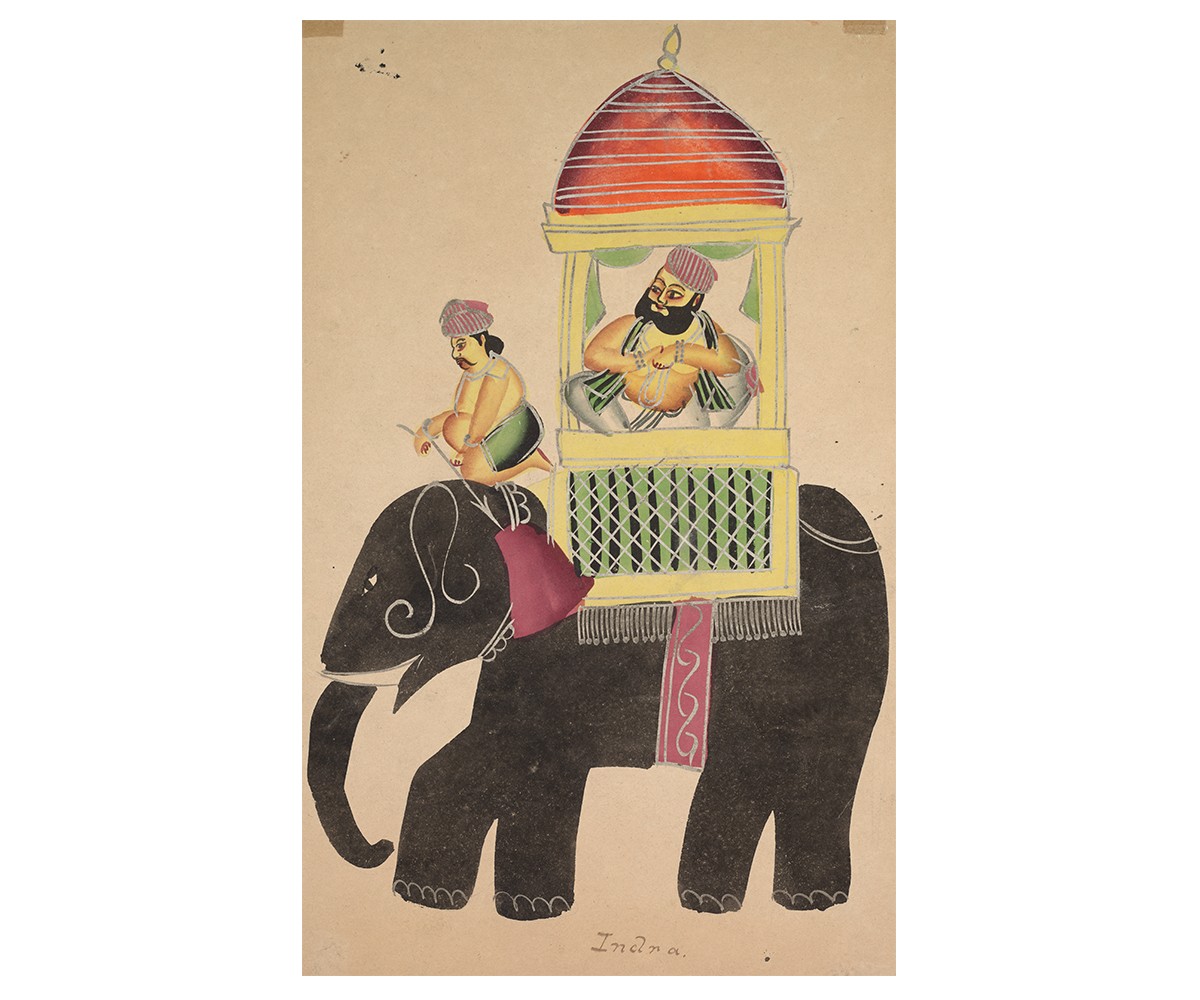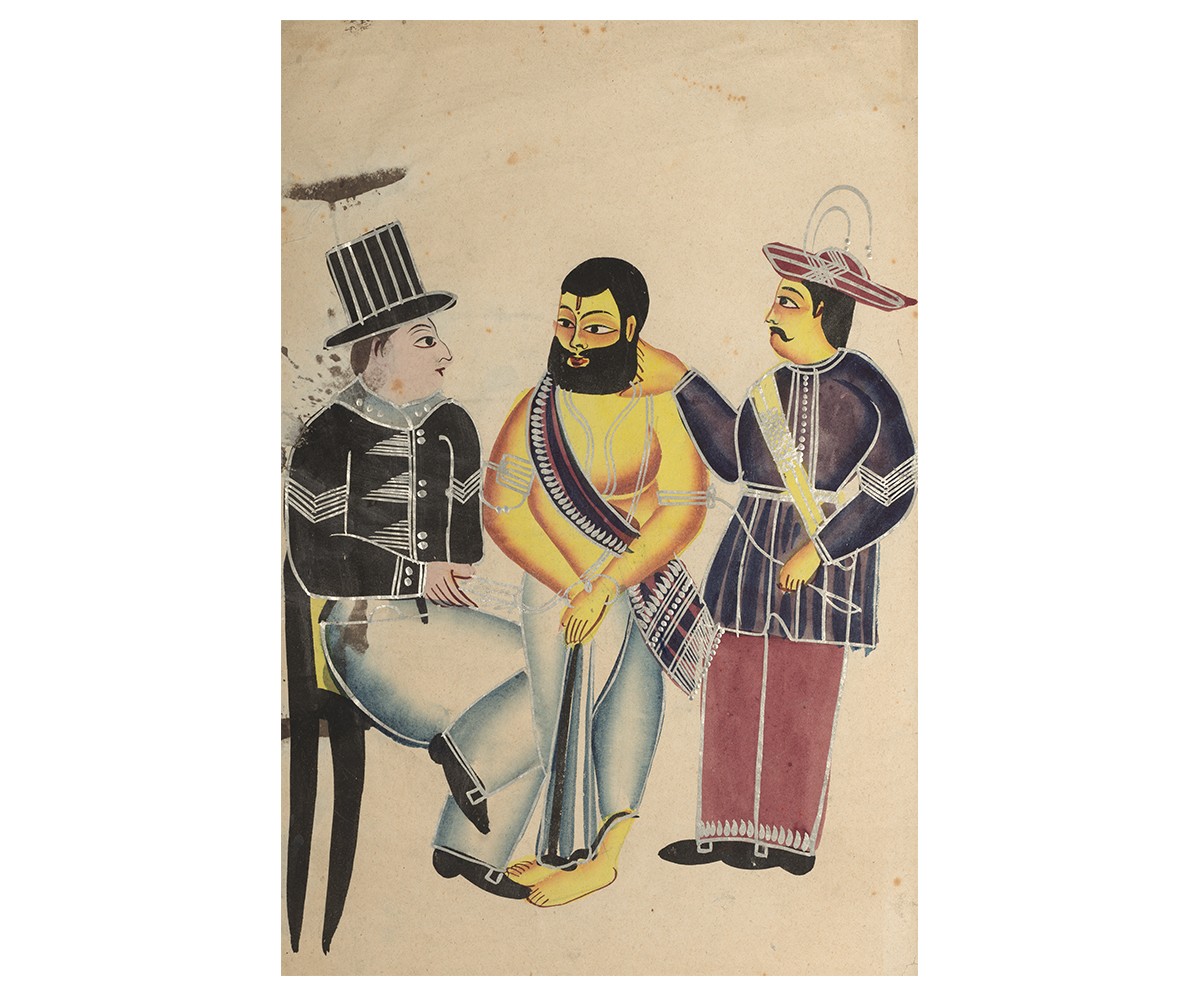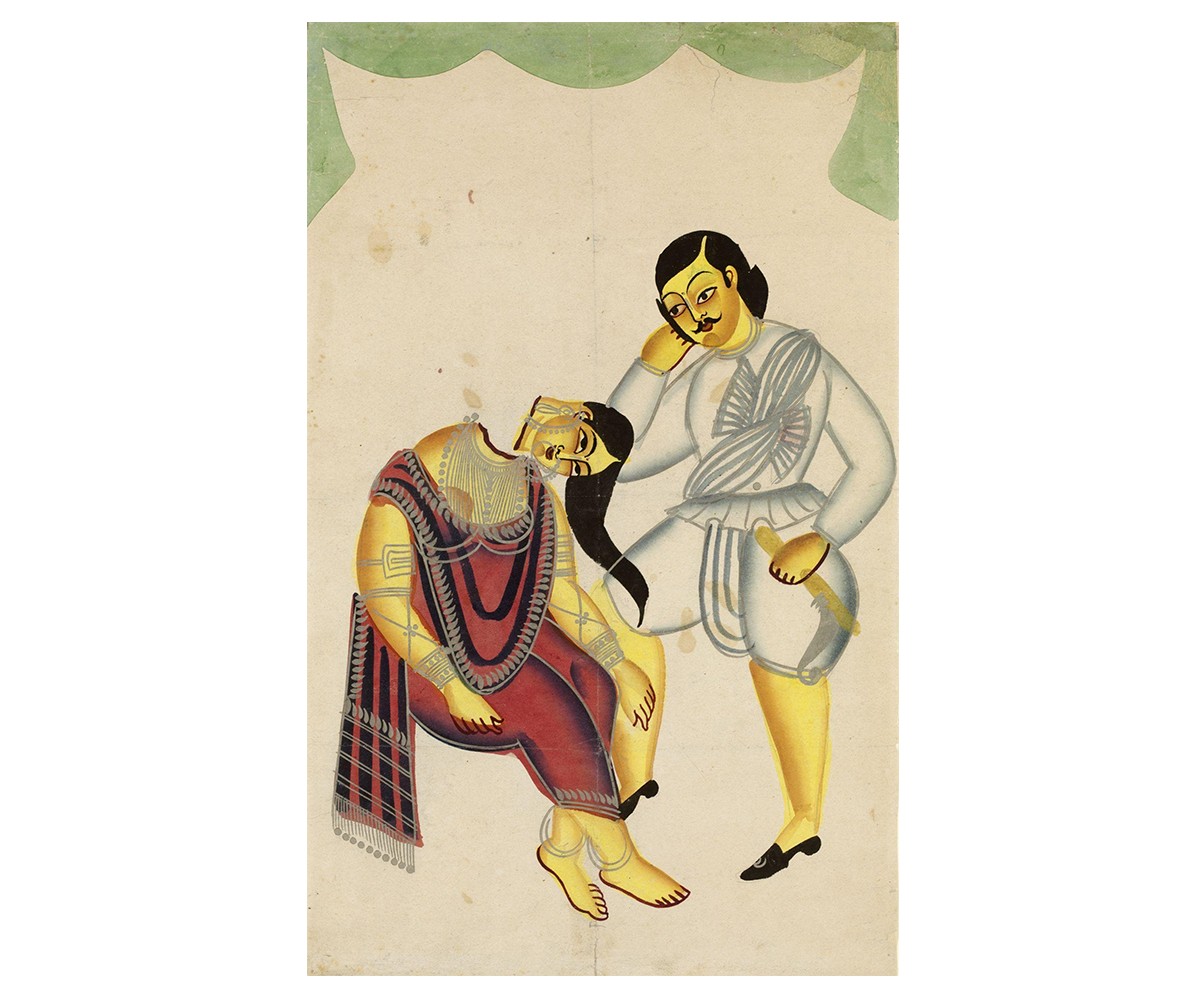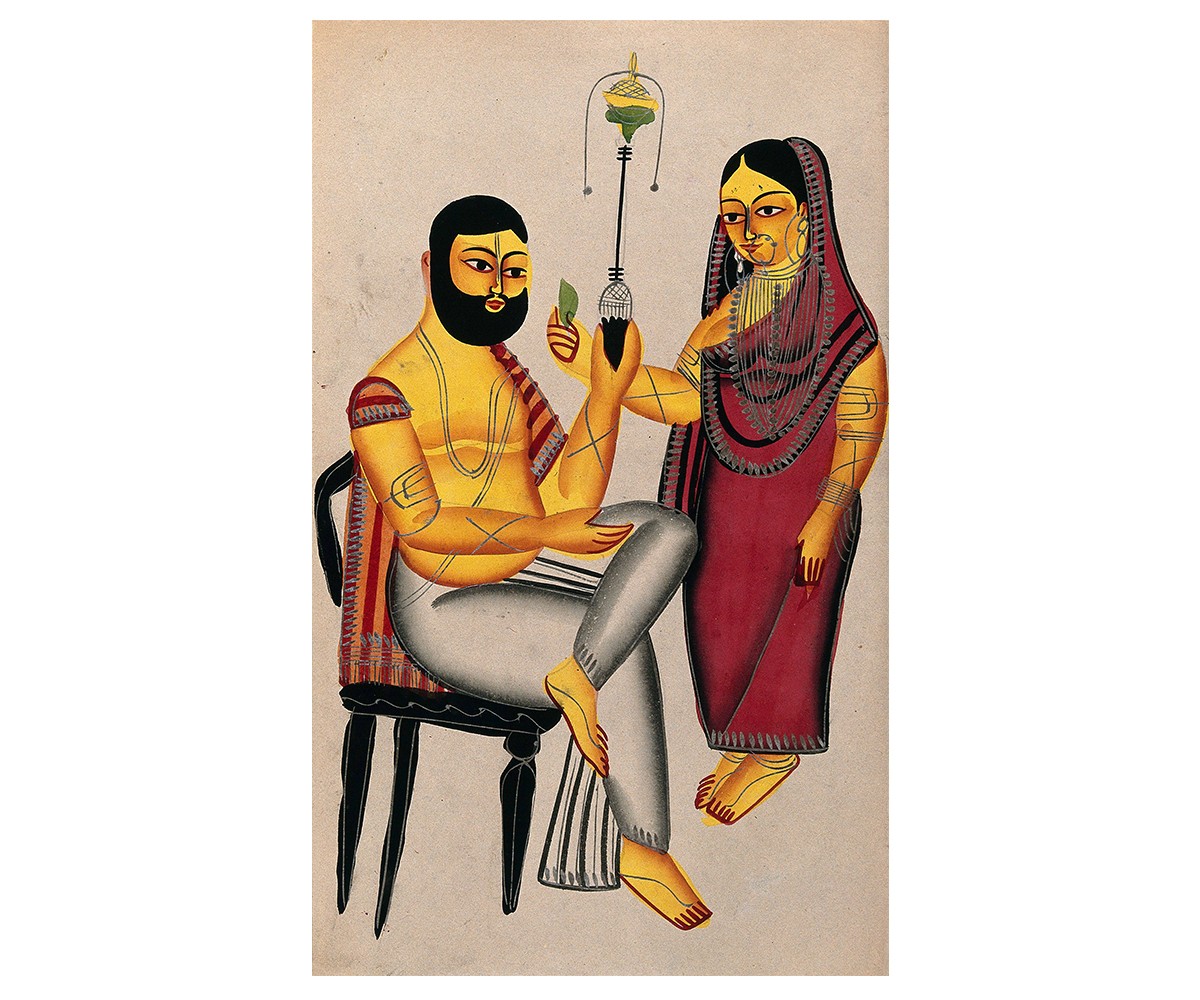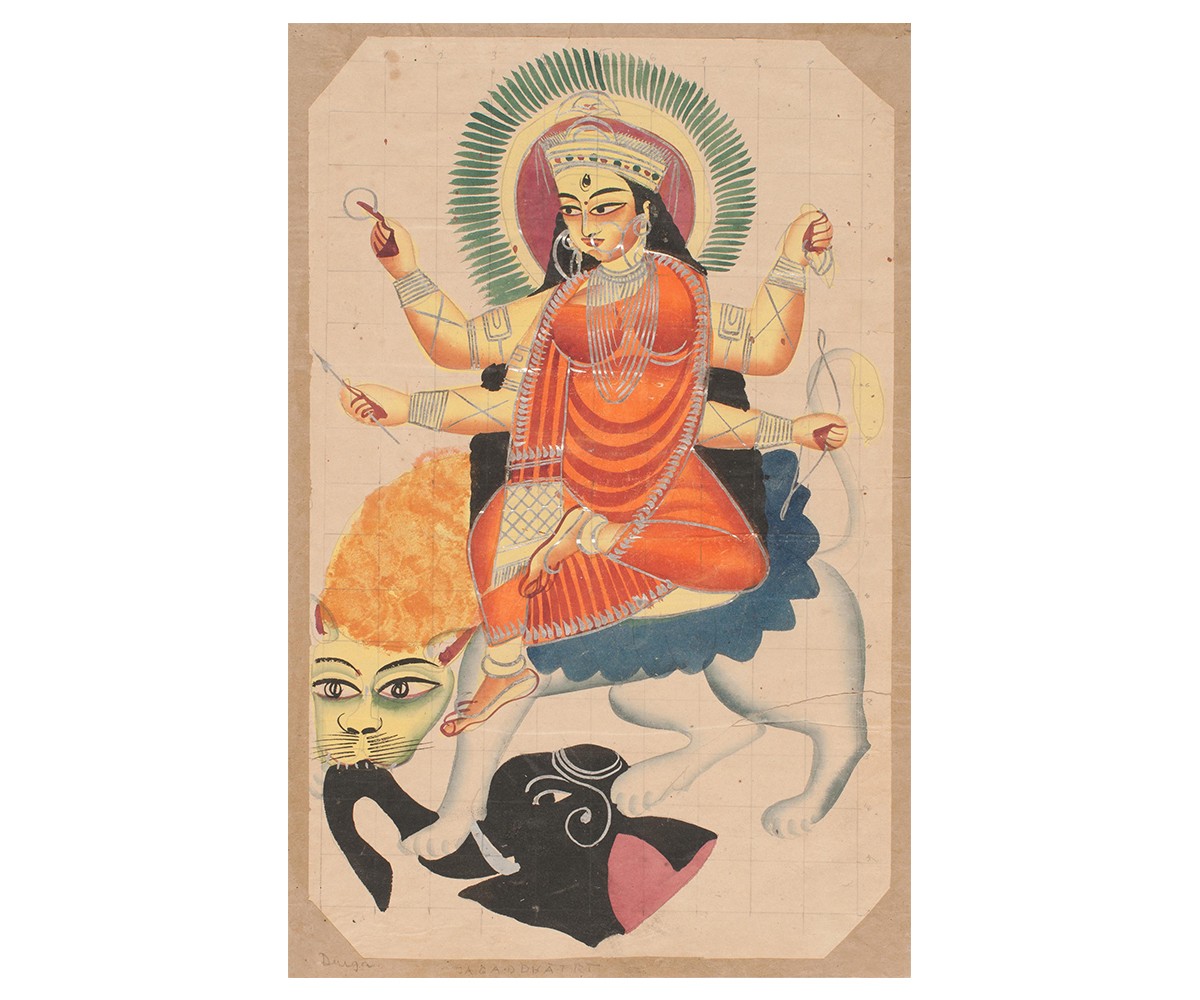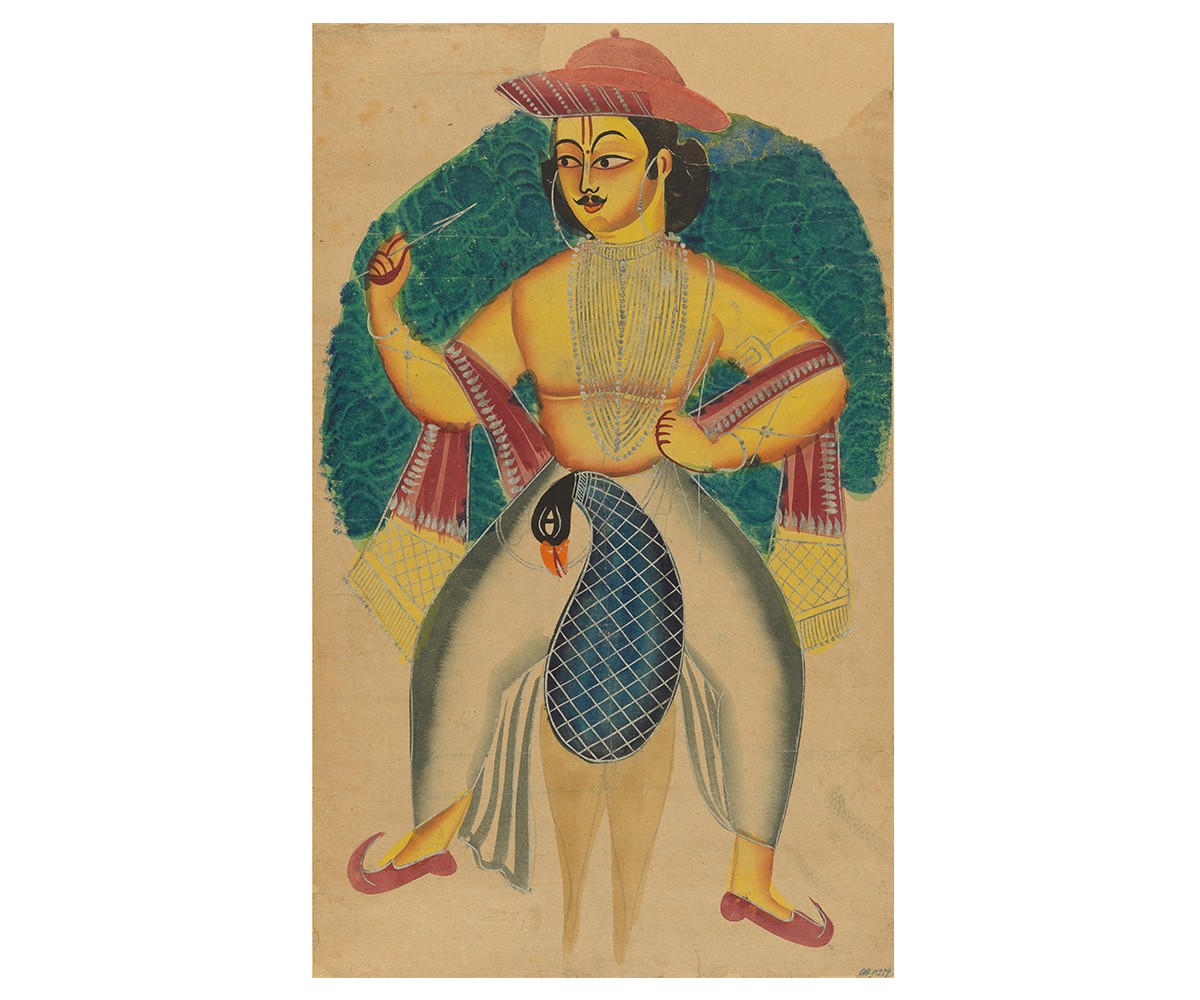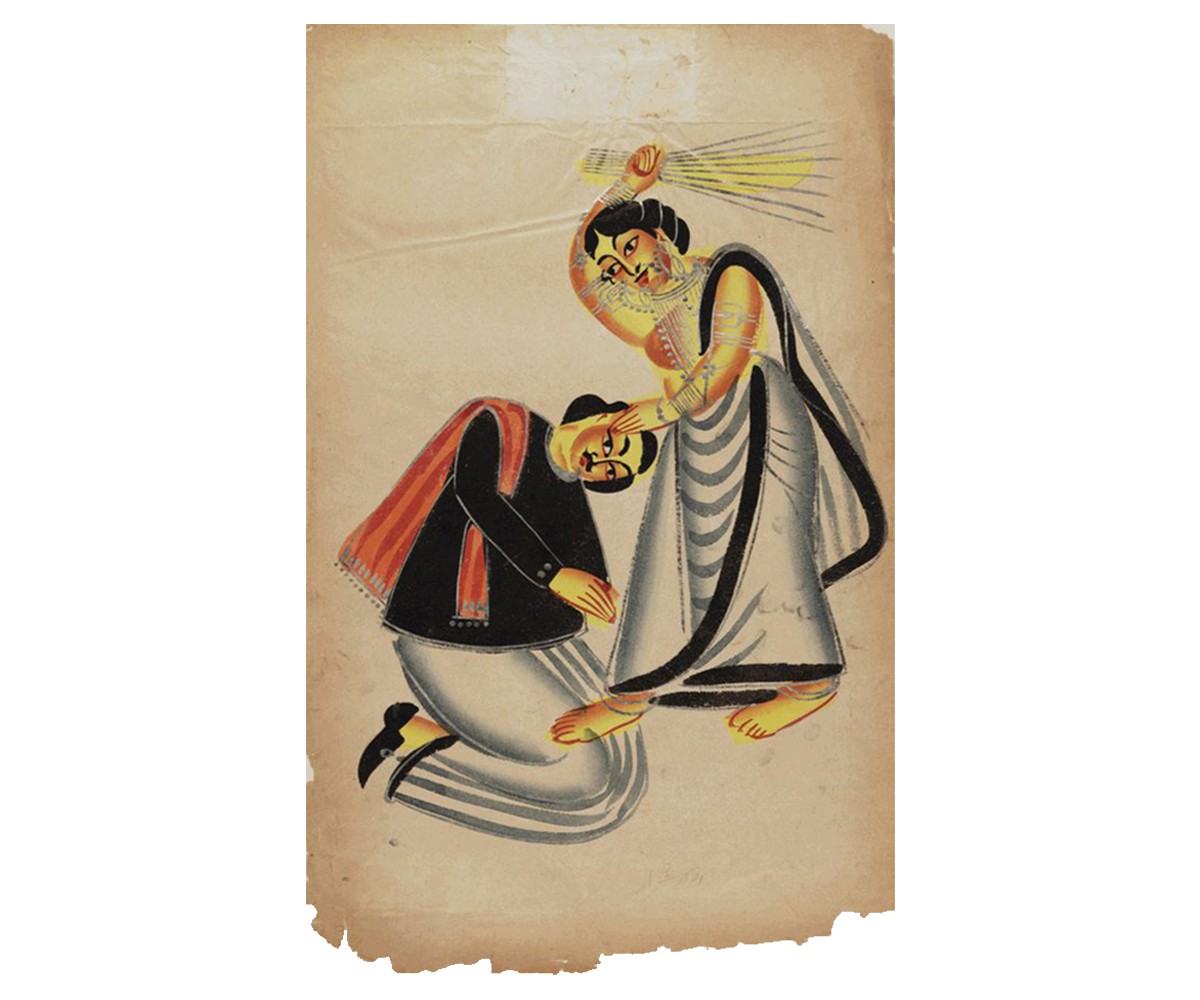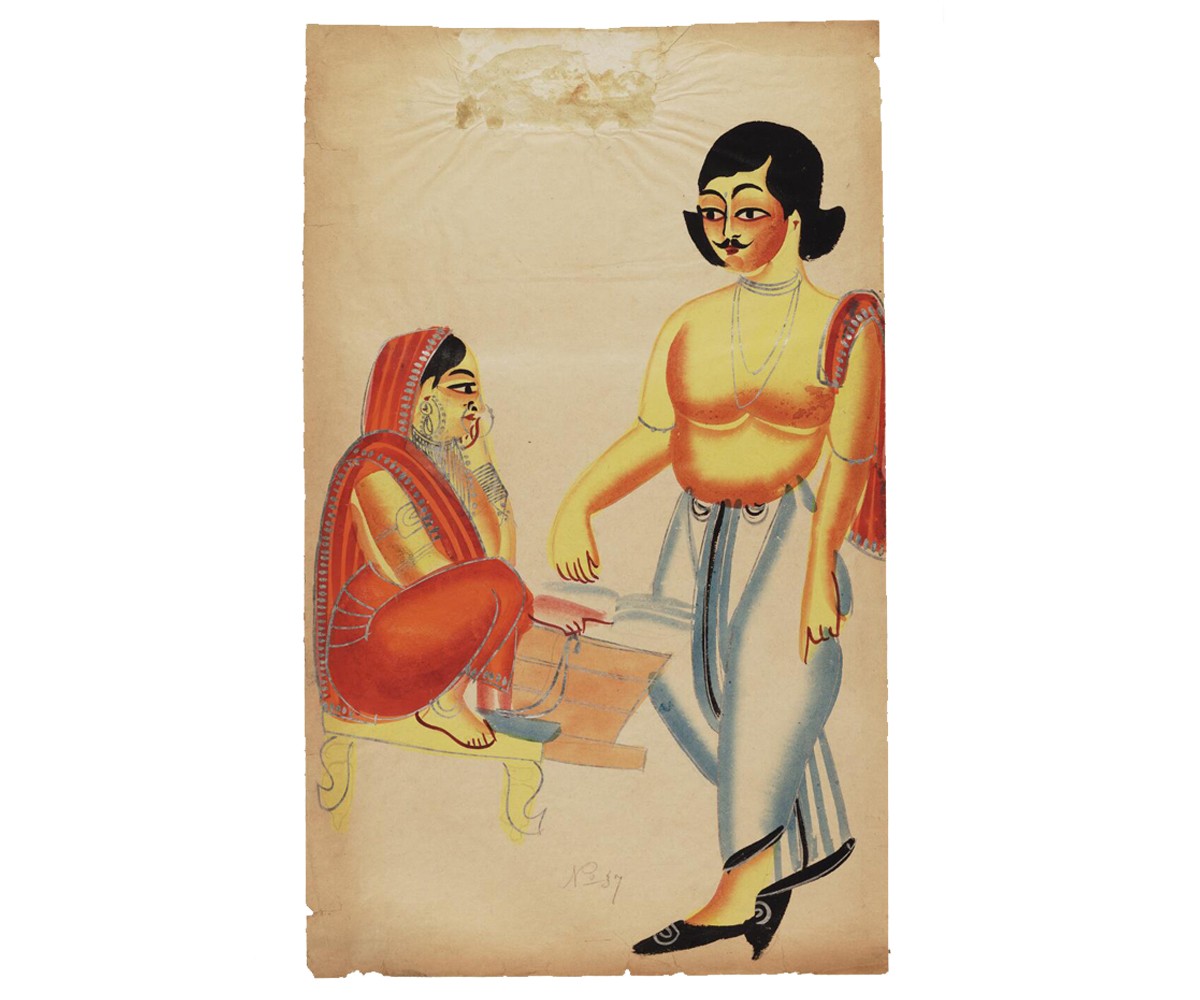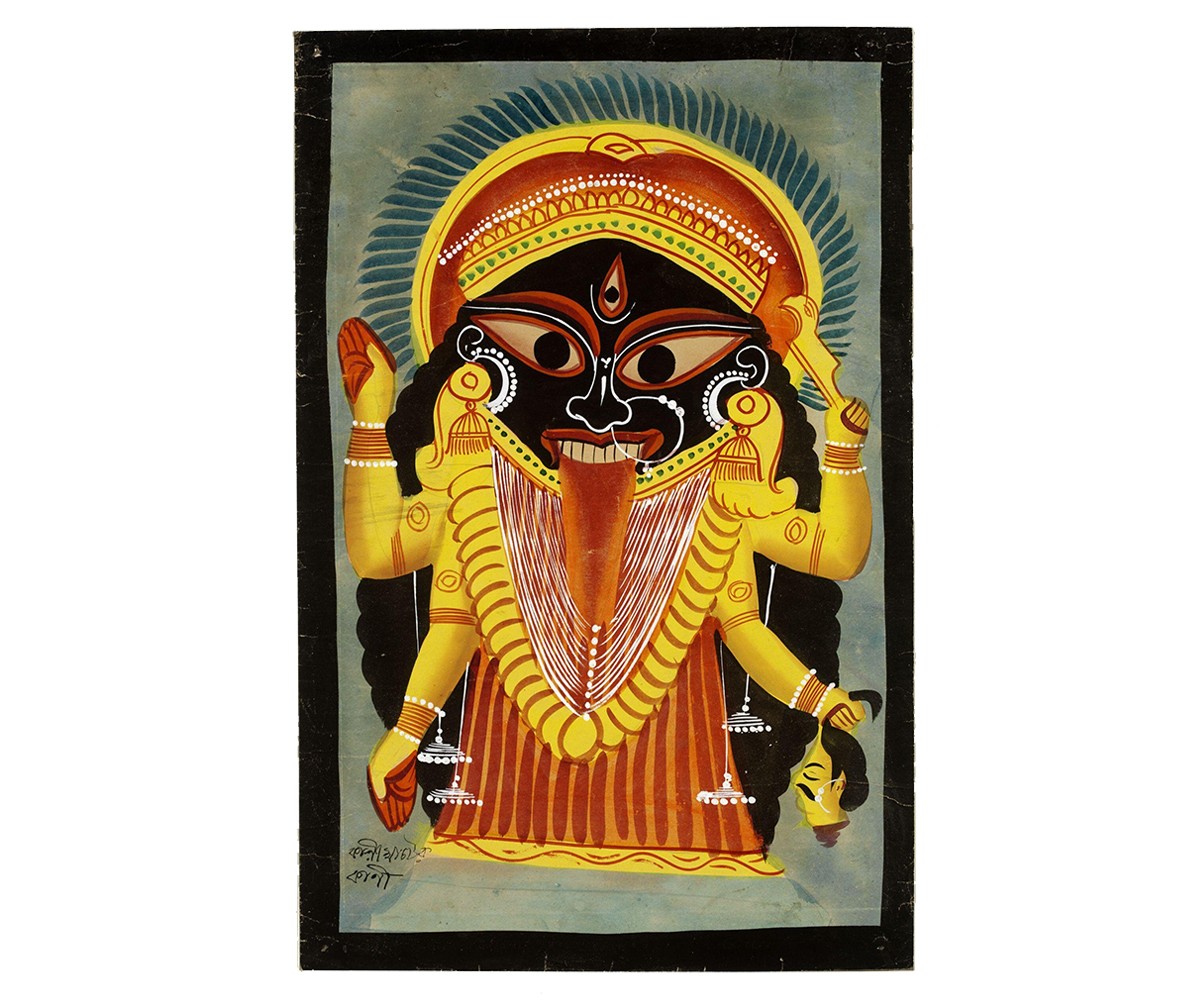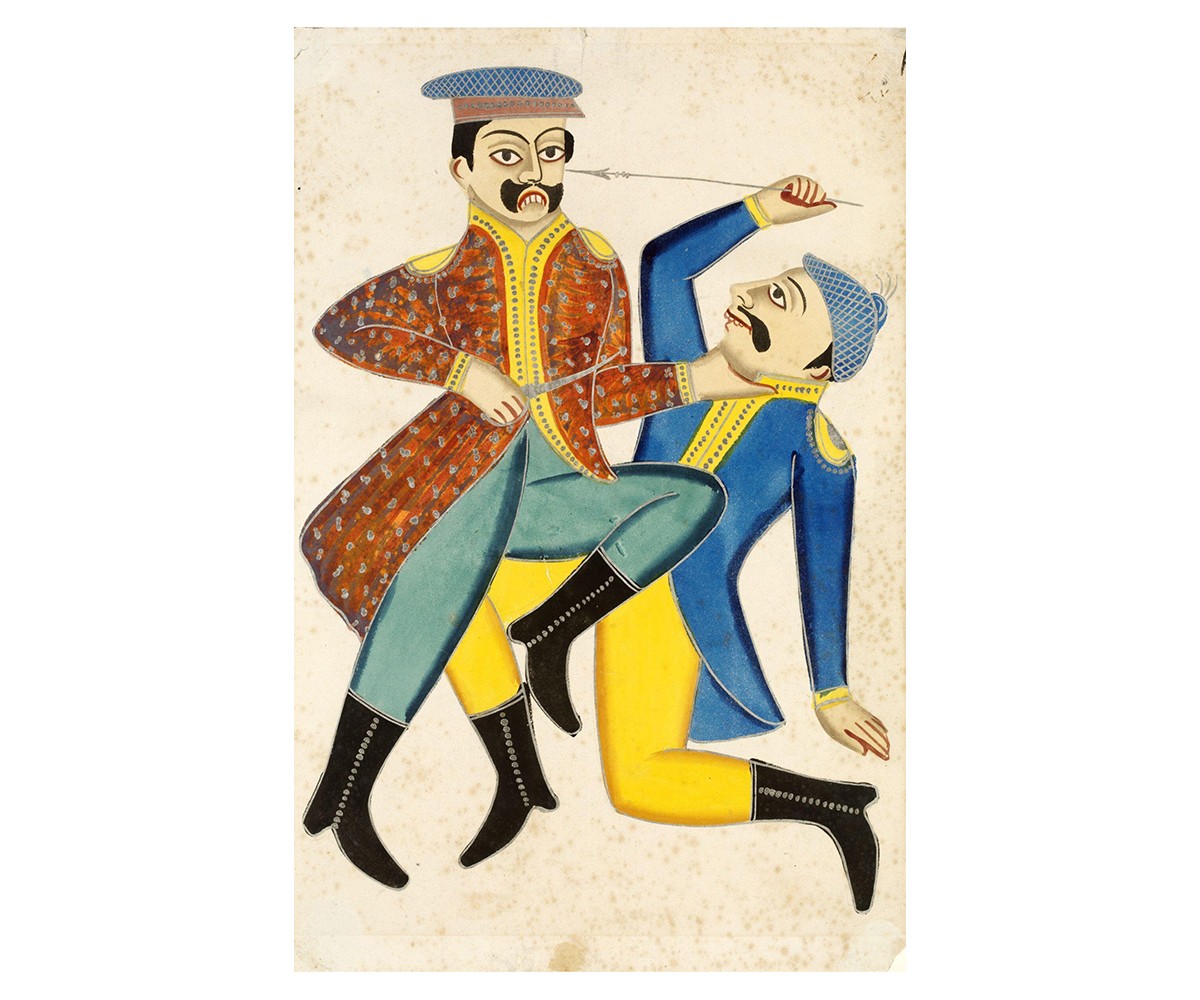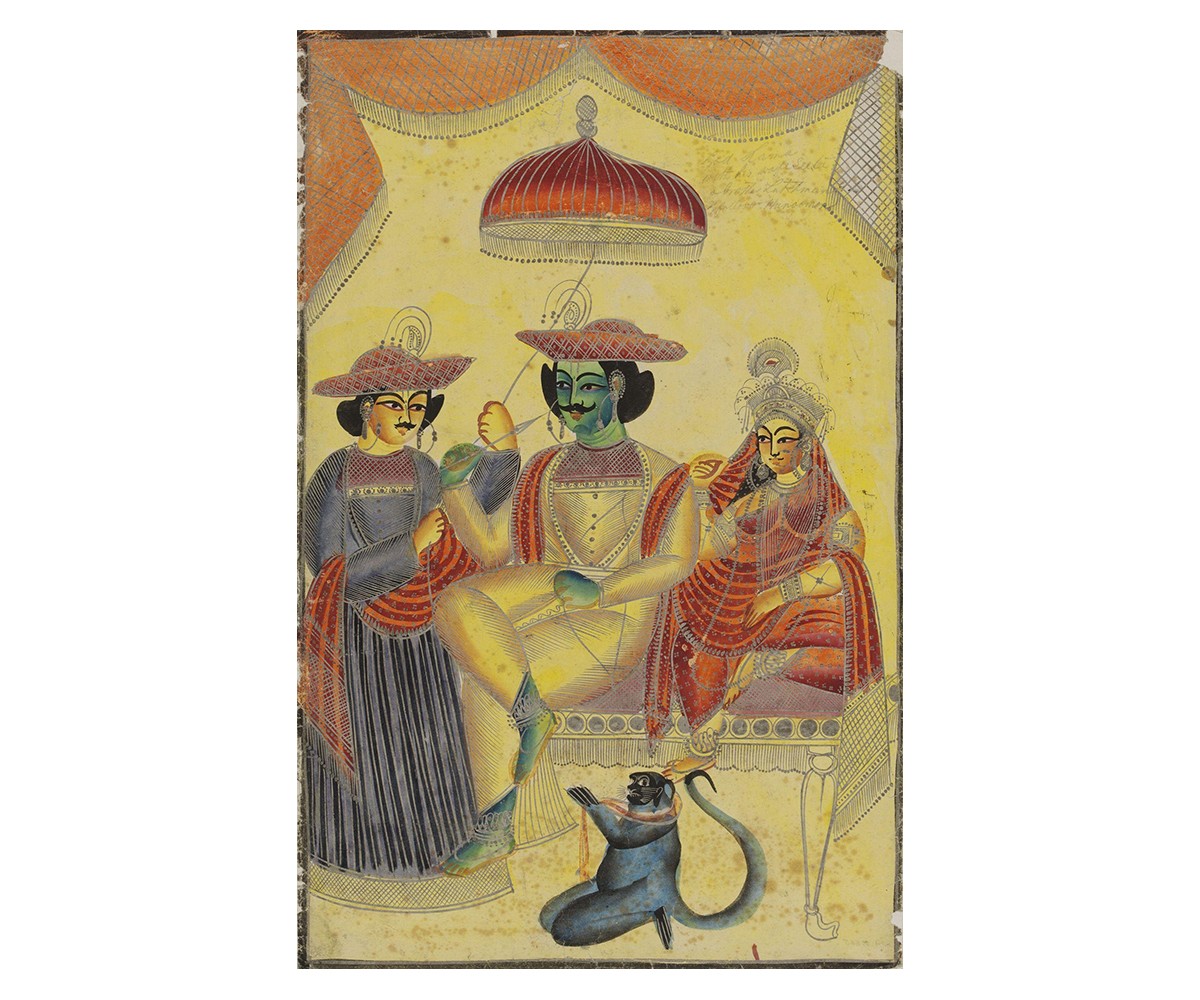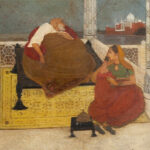The Kalighat Painting Style Is Established
1830–1880
Calcutta (now Kolkata) has developed into a centre of industry and tourism, attracting a number of rural artisans and craftspeople including the Patuas, who traditionally painted over twenty-feet long narrative scrolls known as patachitras. Costly and cumbersome to carry, patachitras find few takers among pilgrims visiting the city, compelling artisans to create smaller and less detailed images — a commercial watercolour variation of their traditional craft — named Kalighat pats, after the city’s temple around which the painters establish their business. Kalighat painting is known for its bright colours, sweeping brush strokes and strong lines.
In the late nineteenth century, Kalighat painting begins moving away from religious themes and icons to depict more contemporary, humorous and satirical subjects, for which the tradition will be best remembered. The artworks, now popular among the migrants and non-elites of the city, begin reflecting socio-cultural and political themes, ranging across topics such as courtesan culture, domestic pets, women’s emancipation, murder trials, horse racing and wrestling, among others.
Bibliography
Archer, W. G. “Kalighat Painting”. Marg 5, no. 4 (1952).
Centre for Cultural Resources and Training. Living Traditions: Tribal and Folk Paintings of India. New Delhi: Ministry of Culture, Government of India, 2017.
Guha-Thakurta, Tapati. The Making of a New ‘Indian’ Art: Artists, Aesthetics and Nationalism in Bengal, C. 1850-1920. New York: Cambridge University Press, 2007.
Sarkar, Rakhi. Art of Bengal: Past and Present, 1850–2000. Calcutta: Centre of International Modern Art.
Feedback 
This entry appears in
Art in South Asia
Visit Timeline
Associated Timeline Events
First Published: March 11, 2024
Last Updated: July 2, 2024



